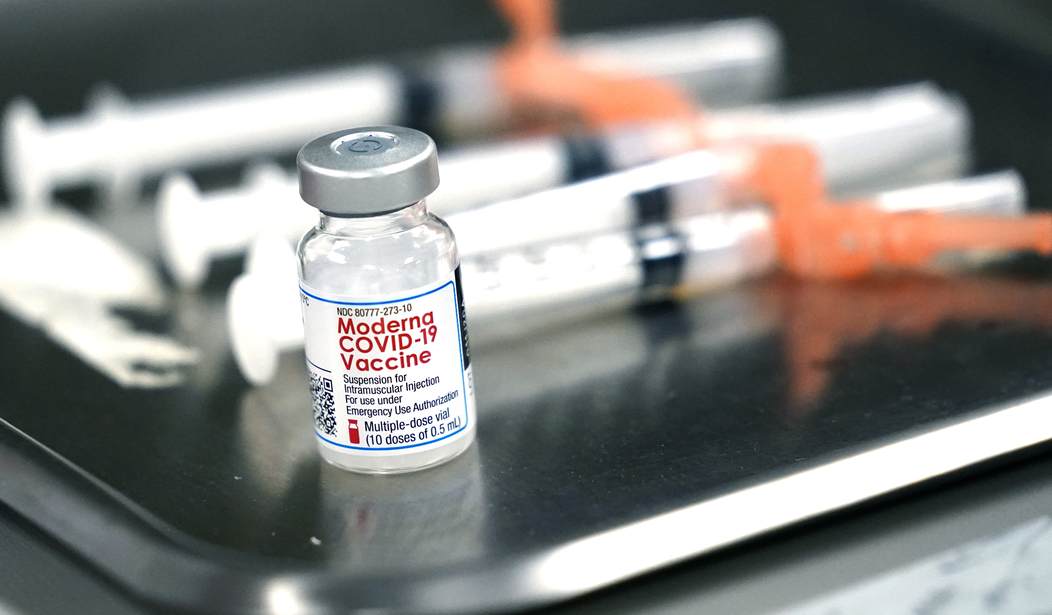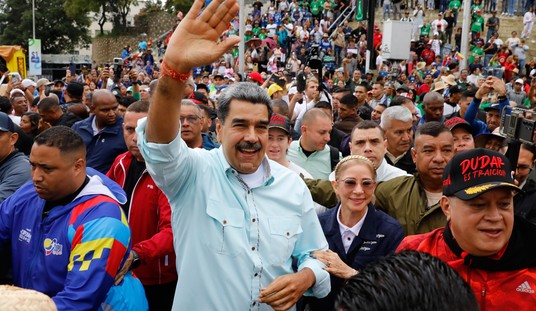I’m sitting here thinking about the fact that all U.S. senior citizens have been eligible for a booster shot for more than a month but just 42.1 percent of the vaccinated among them have availed themselves so far. That shakes out to 36 percent of America’s total 65+ population even though seniors are famously the group at highest risk of death from COVID and even though the feds have been warning about waning immunity since late summer.
The winter wave is building, yet most of the people under the greatest threat from the virus have either stopped paying attention or have reached their limit of how many doses of an innovative new vaccine they’re willing to accept.
Which leads me to wonder: Even if Pfizer and Moderna make good on their promise to crank out new vaccines tailored to the Omicron variant within 100 days, how many Americans will take them up on the offer? Getting dosed would mean that someone who’s already been boosted would need to subject themselves to a fourth shot in the span of less than a year to protect themselves from the latest variant. How many of us will do that? How many are all vaxxed out?
CEO Albert Bourla says Pfizer has already started to develop a new COVID vaccine amid threat from Omicron variant.
Bourla says it can be completed in less than 100 days. pic.twitter.com/gfEXPm4aCv
— The Recount (@therecount) November 29, 2021
In one sense, the answer to the question in the headline is simple: It all depends on how threatening Omicron is. If it ends up hospitalizing people at a rate two or three or five times that of Delta, demand for the updated vaccine will be brisk. Ditto if the current vaccines are, say, only 50 percent effective or less against the variant. But what if they’re 70 percent effective? 60 percent effective? And what if Omicron doesn’t hospitalize people at a higher rate than Delta? Won’t most vaccinated people take their chances with what the shots they’ve already had?
The same questions apply to Pfizer, Moderna, and other vaccine manufacturers. Changing the formula of the vaccine is easy for the companies’ scientists but less easy at the factory; mass-producing a new product would be greatly disruptive to operations at first, I’m sure. What sort of numbers would those manufacturers need to see on Omicron’s transmissibility, virulence, and immunity-evasion for them to decide, “Yeah, it’s worth bearing the costs of that disruption and switching to the new formula”? If the new variant is, for instance, twice as infectious as Delta but only half as virulent and the current vaccines are 50 percent effective against it, what do they do?
What if they conclude that the science says they should switch to the new formula but consumer data shows that only a quarter of Americans will bother getting the updated shot? Do they avoid the manufacturing disruption and have people stick with the current vaccines?
These questions aren’t hypothetical. Moderna is testing three different strategies for containing Omicron. One is a fully updated booster tailored to the variant, of course. Another is a “multi-valent” booster that’s already in trials and is designed to work on multiple variants. And the third is simply a higher dose of the current vaccine, to stimulate the recipient’s immune system into producing enough antibodies that it’ll be able to fend off Omicron even if those antibodies are less effective against the new variant than they are against known variants. Moderna’s not going to change the formula unless there’s a very compelling reason to do so.
There are other complications that may discourage people from getting an updated vaccine dose if it comes to that. One is the approval process. Scott Gottlieb highlighted a fear commonly voiced this past weekend, that even if Pfizer and Moderna whip up a new vaccine and have it ready for production in 100 days, our sluggish federal bureaucracy will drag its feet on approving it as thousands of Americans die. Gottlieb is optimistic about that, believing that the FDA will streamline the process in the event of an Omicron crisis:
"The FDA is in a position to move very quickly at this point because they understand the basic platform, the manufacturing has been inspected," says @ScottGottliebMD. "What they would be looking at is immunogenicity data and maybe neutralization studies." pic.twitter.com/gA1qHPnxkw
— Squawk Box (@SquawkCNBC) November 29, 2021
I hope he’s right. But if he is and the FDA ends up rubber-stamping the new vaccine because they’re now confident that the mRNA products are safe and effective, vaccine skeptics will use it against the agency by claiming that they didn’t do their due diligence. That argument has been used, falsely but effectively, against the mRNA vaccines for the past year: Because they reached the market so quickly after development, supposedly they can’t be trusted. Corners must have been cut! If that logic succeeded in steering some people away from vaccination despite the fact that the original vaccines spent many months in trials, imagine how it might work with a new vaccine that goes from development to the pharmacy in just three months.
There’s another problem. As anti-vaxxism becomes more of a populist cultural touchstone, Republican pols will increasingly try to undermine vaccine uptake to prove their tribal authenticity. The emergence of Omicron this past weekend produced some truly moronic takes among certain figures in GOP politics and media:
Here comes the MEV – the Midterm Election Variant! They NEED a reason to push unsolicited nationwide mail-in ballots. Democrats will do anything to CHEAT during an election – but we're not going to let them!
— Ronny Jackson (@RonnyJacksonTX) November 27, 2021
They are going to try and sell us new “Variants” for the rest of our lives if we don’t tell them to shove it.
— Kari Lake for AZ Governor (@KariLake) November 28, 2021
Fox News hosts suggest coronavirus variants are made up to help Democrats:
CAIN: “Always a new variant.”
HEGSETH: “Count on a variant about every October, every two years.”
CAIN: “You’re probably right…”
HEGSETH: [mimicking phone call] “We’re gonna need a new variant here.” pic.twitter.com/cXhbWY2vWa
— Heartland Signal (@HeartlandSignal) November 27, 2021
What’s dumber, the idea that a variant that emerged in Africa and has every scientist in the world concerned is some sort of Democratic dirty trick? Or the idea that Joe Biden and his party would find it to their political advantage to have another round of COVID panic here in the U.S.? Biden’s single biggest political problem is that the pandemic continues to rage despite his promise before taking office that he’d shut down the virus. He’s so exposed on the subject that Republicans have begun to attack him for it even though they complain chronically about — or actively oppose — virtually every COVID mitigation measure available. If an updated COVID vaccine tailored to Omicron hits pharmacies in February, you know how righties will react: “Too many doses are dangerous!” Or “Another dose? I guess the first three didn’t work.” Etc etc. That’ll steer some people away from getting vaccinated too. Maybe Biden will react by issuing a new vaccine mandate, causing Republicans to wonder if he expects Americans to get jabbed every week now. That’ll polarize the matter further, driving even more people away.
The bottom line: If the current vaccines don’t work well against Omicron, we could see cases rage for months next year as many vaccinated people suffering from “vaccine fatigue” decide to skip the updated shot and take their chances with the virus. Maybe the symptoms will be so mild that it won’t matter. But even a variant that causes mild symptoms in most people could create a crush at hospitals if it spreads quickly enough.







Join the conversation as a VIP Member